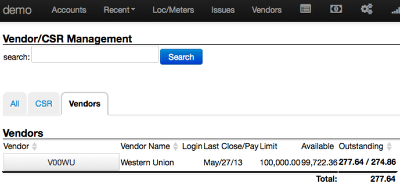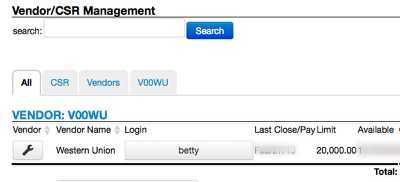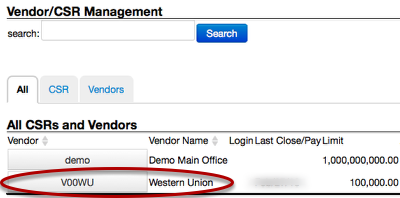What is "Vendors"?
In Juice the term vendors is used for groups and individuals. Specific groups (stores, regions, or shifts) can be described as a vendor group or the entire organization may be configured as a vendor. This is left to the utility and system administrator's discretion.
Vendor: Group and Individual usage
An important concept in juice is the "system user" and the "vendor group". All system users are part of a vendor group. This allows the system to control vending and other user activity.
What is a "system user"?
A person with a login is represented in Juice as a "system user". This can be a specific individual, with a login like 'betty', or a position, like 'csr2'. For accountability we recommend using personal logins but if due to scheduling, job role, or other reasons; a generic login can be useful.
If that system works for a third party, they can be labeled as an outside vendor. They have different system rules for transactions, editing, and reporting. For example, it will affect how funds collected by a vendor are handled. In the example above betty, is an employee of Western Union and she has a personal vending limit of 20,000.00.
Vendor Group
In juice every organization will have a vendor group number, these groups can be labeled as third party or not. The vendor group can vary in size and scale from a single system user to multiple locations with various users at different permission levels. For example, Western Union is a third-party vendor who is allowed to collect up to 100,000.00 on behalf of the utility.
When the term 'Vendor' is used, vendor groups are usually the ones being referenced.
Vendor Management
All vendor groups and vendors will have vending limits that should be closely monitored. If the limit is reached the vendor will not be able to collect any more funds thru Juice. The limit is an important tool to balance risk. If you have a collection process in place with an established vendor having Juice will be able to accommodate current arrangements. You can cash out multiple batches per vendor daily if needed.



